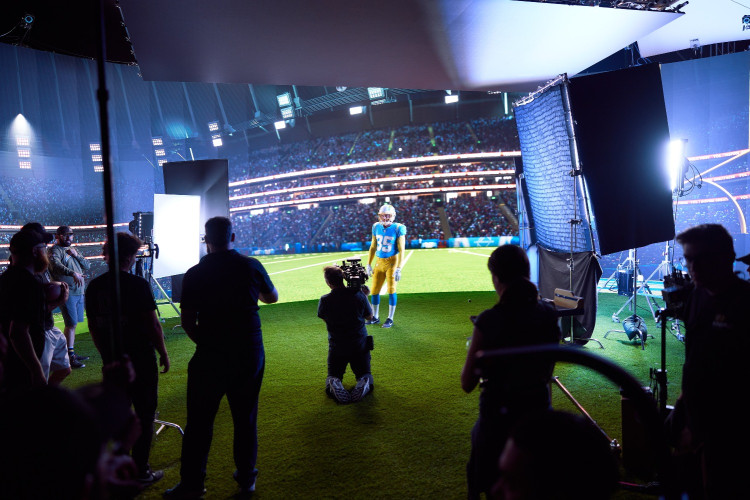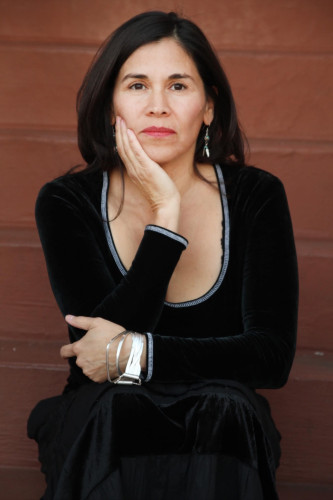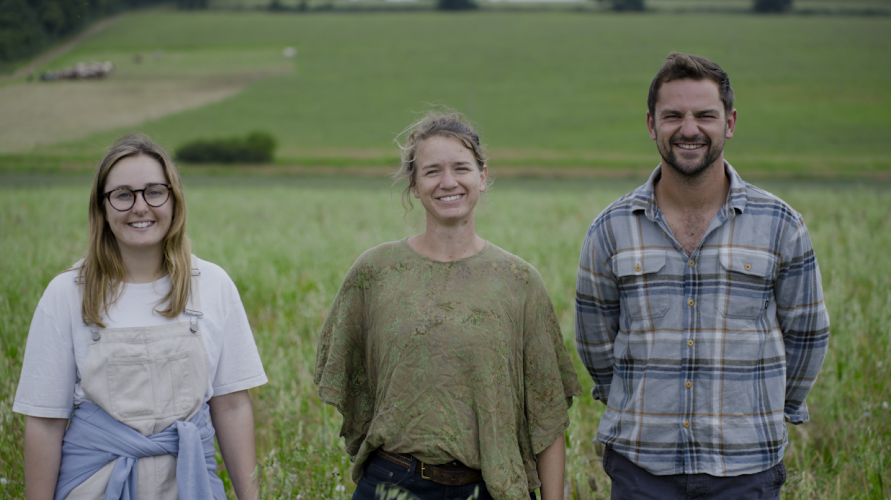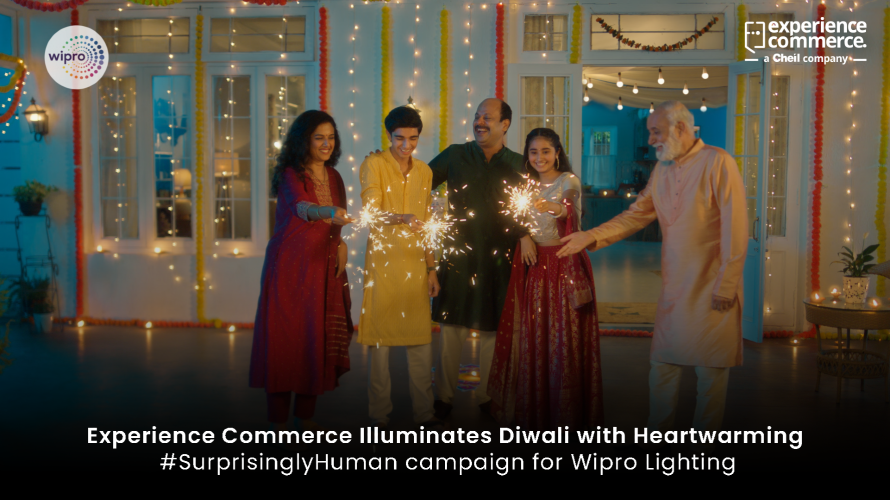Founded in 1982, the Wildscreen International Film Festival is claimed to be the world's largest event of its kind. It attracts several hundred delegates from more than 30 countries, all of whom (if they register early enough) get their contact details listed in the festival directory. The festival is staged every two years in Bristol and revolves around 'Panda Awards' bestowed on what are judged to be the best recently-completed natural history productions. This year's festival was held at the Watershed Media Centre, 10-15 October 2010. Awards were issued on Wednesday 13 October by travel-programme-maker Benedict Allen and the BBC news presenter Kate Silverton.
What attracted me to this year's WIFF was neither the film festival nor the proximity of Brunel's magnificently restored 'SS Great Britain' but the parallel exhibition of video production equipment. Organised by Martin Hammond (www.mjhmedia.co.uk), this was supported by a small mix of equipment manufacturers, resellers, production companies and service agencies, all focused on the sharp end of content acquisition. Plus an informal 3D workshop. No sign of of furry camouflage for cameras but there were nevertheless some new-kit surprises.
ARRI
Just seven years short of its centenary, ARRI has long been synonymous with high-grade cine cameras. Centrepiece of its exhibit was the Alexa camcorder, introduced at NAB in April and making its first UK exhibition appearance. This captures content in Apple ProRes file format at the standard 1920 x 1080 pixels HD resolution to hot-swappable SxS-Pro (PCI Xpress) memory cards. The front-end imager is a 35 mm 16:9 CMOS sensor with 3112 x 1782 active pixels and a 23.76 x 13.365 mm aperture, capable of operating at 0.75 up to 30 frame/s. At 6.26 kg and 329 x 158 x 153 mm (body LWH), this is no featherweight but the picture quality is well up to the standards required for no-compromise digital video production. The camera is designed for use with Apple Final Cut postproduction systems and has a base price of 50,000 euro.
Gekko
Gekko Technology's karesslite 6012 was exhibited on the Vision Research stand as a light source for VR's Phantom high speed camera. Based on a layout of 6 x 12 LEDs and measuring 600 x 300 mm, the karesslite 6012 can be used as a single soft light source or optional egg-crates for harder shadow. Power consumption of the karesslite 6012 is approximately 85 W, allowing more than three hours of continuous operation from two rear-mountable V-Lock batteries. An integral diffusion grating ensures the lamp is truly single-source. Available in daylight, tungsten or dual colour temperatures, the karesslite 6012 has on-board dimming as well as built-in DMX.
LCA exhibited two Film Gear LED-based strip-light systems. The mains-powered Flo Box incorporates a bank of four 4 ft tubular lights, each with 640 diodes, mounted in a 1305 x 250 x 70 mm LWH structure normally associated with fluorescent tubes. The strip-lights each consume 25 W and are available in 5500 and 6000 K whites. Accessories supplied include mounting bracket, gobo head and removable eggcrate diffuser. The much smaller 'LED Pen' has two miniature LED dimmable tubes consuming 6W in total and delivering a claimed 92 lux at 1 m distance. Power is from 12 to 24 V DC.
Panasonic
Panasonic AV Systems, recently rebranded from Panasonic Professional Broadcast & IT Systems, demonstrated its new AG-3DA1 integrated-lens 3D camcorder and AG-AF101 DSLR-style 2D camera.
Introduced in prototype at NAB in April, the AG-3DA1 has dual zoom lenses and dual 1920 x 1080 3-MOS imagers. It can record 1080/60i, 50i, 30p, 25p or 24p (native) and 720/60p or 50p in AVCHD. Up to 180 minutes can be captured to dual hot-swappable 32 gigabyte SD cards in AVCHD PH mode. Interfaces include dual HD-SDI out, HDMI (version 1.4), dual XLR connectors, built-in stereo microphone and twin-lens camera remotes. Convergence adjustment and automatic correction of horizontal and vertical displacement are provided. Power consumption is 16 W, weight is 3 kg and price is 16,800 euro.
The AG-AF101 can record video in 1080/24p, 1080i and 720p formats to dual SDXC memory cards at up to 24 Mbit/s. Recording capacity is up to 12 hours in PH mode or 48 hours in HE mode using two 64GB SDXC memory cards. Interfaces include HD SDI output and dual XLR audio (48 V phantom power source compatible) inputs. Other features include a Micro Four Thirds lens mount and timecode recording. The camcorder incorporates a 4/3 inch MOS sensor to allow wide-angle shooting and shallow depth of field. Frame rate in 1080p mode is selectable in 20 steps from 12p to 60p at 60Hz and 20 steps from 12p to 50p at 50Hz. Price is 4,900 euro. Available from December.
Polecam
Polecam demonstrated a preproduction prototype DSLR head capable of accommodating a 3.5 kg payload including cameras such as the Canon D5, or compact video camcorders. "The DSLR head is proof that we listen to what the industry wants,\" comments Polecam MD Steffan Hewitt. "Suitable for use on our standard 6 metre rig, it is derived from the existing version developed for minicams. Features include the standard pan and tilt unit but with the addition of slip-rings for composite video monitoring and DC power feeds to allow unrestricted 360 degree pan. We were particularly pleased with the results obtained from the Panasonic AG-AF101 which we tested on the new head during the festival."
Workshops
A broad-ranging series of workshops provided a third strand to the festival. These included sessions on music, lighting, underwater shooting, budgeting, research, production management, scriptwriting, high-speed cameras, pitching to commissioners and digital image manipulation. A one-day 3D hands-on workshop was held on 13 October after which much of the equipment on display was transferred to the exhibit hall. Dave Blackham (www.espritfilm.co.uk) summarised:
"This is the day when we can get the cameras out of the boxes and actually try it. It is useful for people to see how the systems differ, not least in size, ranging from a large motor-adjusted digital cinematography rig from Red and P&S Technik for studio use to the Panasonic AG-3DA1 portable camcorder which produces very nice 3D for middle-distance shots of mid-size objects. Shooting for cinema requires a different interaxial distance than shooting for television so it is important to know at the outset what size of screen you are composing for. The bigger the screen, usually, the smaller the interaxial. The larger 3D rigs are essentially customised dual-camera systems with adjustable interaxial distance, assembled from many components. Adding completely motorised adjustment makes a big difference in price. For wildlife work, the rigs need to be manageable in size and operation and robust so techniques are increasingly being borrowed from the features world where 3D is more advanced. We had the first Gates underwater housing for the Panasonic AG-3DA1 3D camcorder and 3D NanoFlash recorder. The combination is easy to operate and performed well. The only real way to learn 3D is to actually do it. I certainly learnt a few things at the workshop from the exchange or ideas and techniques.\"
2012
The Wildscreen International Film Festival returns to the same location in 2012 at same location, date to be confirmed. Competition for the next round of awards opens during the preceding January, finalised being notified in May.




































